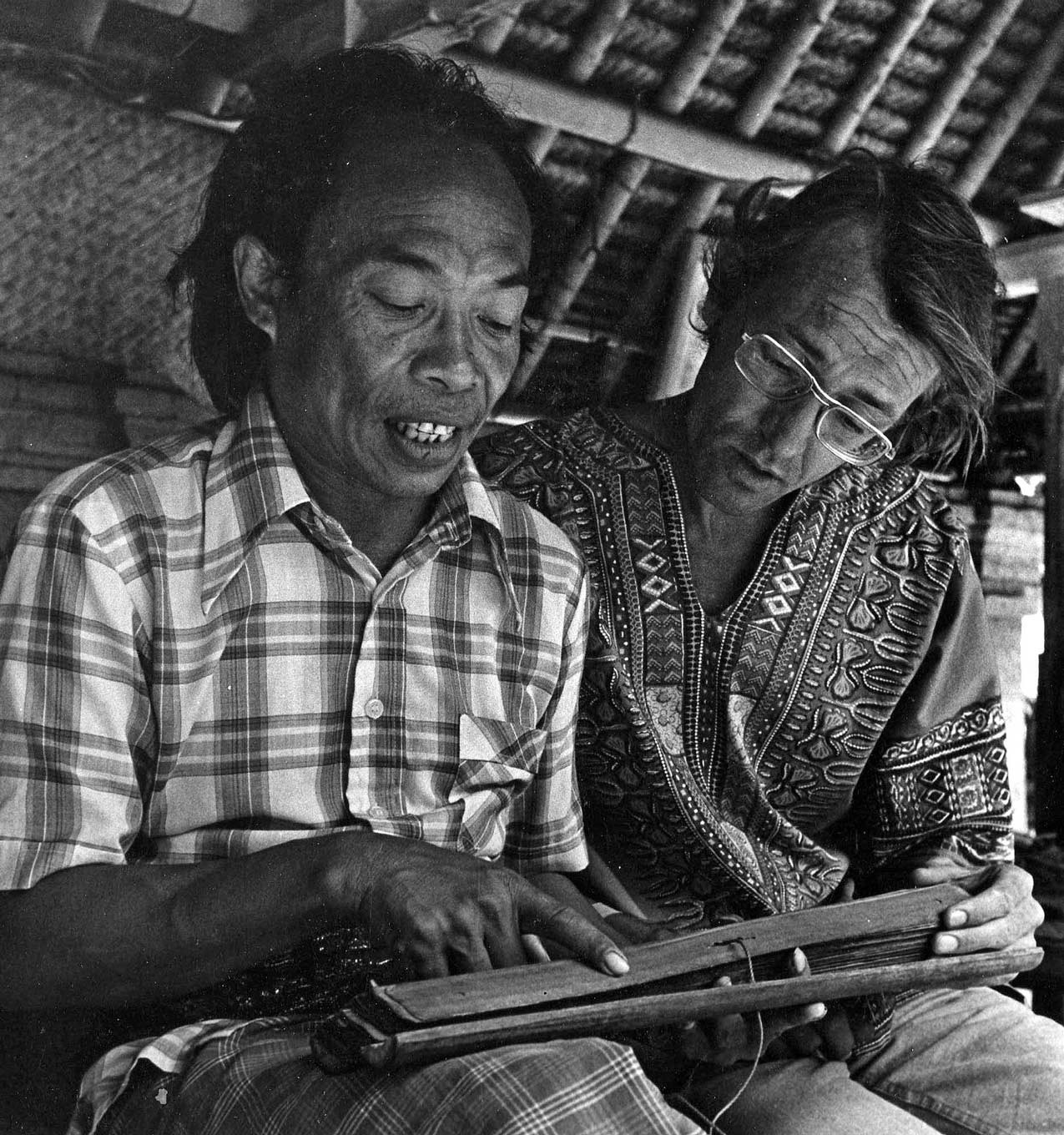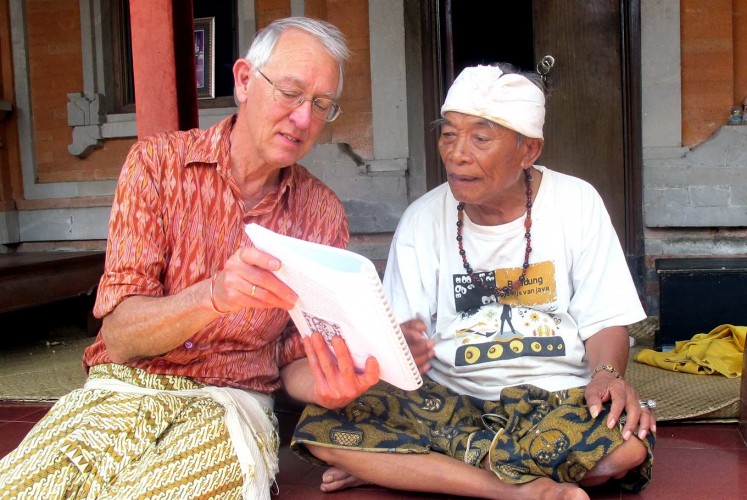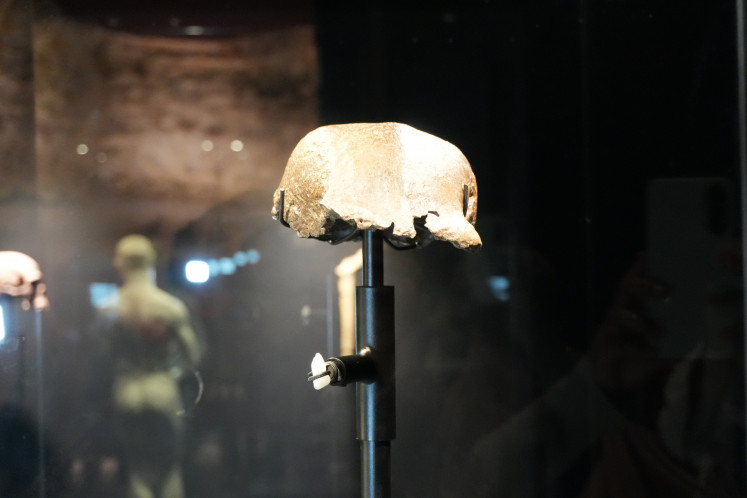Popular Reads
Top Results
Can't find what you're looking for?
View all search resultsPopular Reads
Top Results
Can't find what you're looking for?
View all search resultsDavid Stuart-Fox: Author of Ketut Liyer biography
Change text size
Gift Premium Articles
to Anyone
A
uthor David Stuart-Fox’s latest book arose out of his personal friendship with Ketut Liyer, the late folk healer made world-famous by Elizabeth Gilbert through her best-selling novel Eat, Pray, Love.
David Stuart-Fox left his career as a journalist in Vietnam and Japan for United Press International in 1968 and a tentative assignment in Jakarta — a plunge into the unknown that was to lead to a colorful and unusual life working as a writer in Indonesia and respected scholar on Balinese culture.
Traveling widely in the country for decades, Stuart-Fox has published features for magazines including Garuda Magazine and Travel Indonesia, and worked as an editor for Singapore’s APA Productions in the revisions of their guidebook series on Bali and Java.
Jakarta became Stuart-Fox’s base from where he embarked on a six-month journey via Bali across the islands of East and West Nusa Tenggara, as far as then Portuguese Timor. This was followed soon afterwards by a six-month sojourn in South Sulawesi.
Moving to Bali in the early 1970s where he stayed in a small village south of Ubud, Stuart-Fox met the late Ketut Liyer, the celebrated folk healer and painter, who became the subject of his newest book Pray, Magic, Heal.
The chance purchase of an intriguing carved hilt of a betel pounder in the shape of a crouched human figure, said to come from a remote village called Budakeling, brought him to Bali’s center of Buddhism.
With an Indonesian friend, Stuart-Fox stayed for a year in a little house in the middle of the rice fields, rarely leaving the village.
From that enriching experience came his first book about Bali, The Art of the Balinese Offering, published in 1974. Like so much of his work, photography and visuals play a significant role in the book, which was published through the intermediary of the late poet WS Rendra, whom Stuart-Fox met in Yogyakarta.
For Stuart-Fox, the book was to eventually bring him into contact with a Dutch student, Francine Brinkgreve, who in 1988 became his wife.
Toward the end of the 1970s, another event had a major impact on his life: The Hindu authorities in Bali made the decision to hold the Eka Dasa Rudra ceremony, enacted only once every 100 years, at the great temple of Pura Besakih, Bali’s most important temple.
Granted unhindered access by the authorities, Stuart-Fox was able to carry out an exhaustive study of the ceremony that resulted in one of his favorite books, Once a Century: Pura Besakih and the Eka Dasa Rudra Festival, published in1982.
His Besakih studies led to his completing a Ph.D. on this temple at the Australian National University. It was published in 2002, with an Indonesian translation in 2010.
During his career, Stuart-Fox has written about a wide range of subjects. While living in Bali in the 1970s and 1980s, he was able to gather an impressive collection of local publications. This interest finally led to the monumental Bibliography of Bali: Publications from 1920 to 1990, published in 1992 by KITLV in Leiden, the Netherlands.
“One does not take on a work of this magnitude — 8,000 entries and 708 pages — but once in a lifetime if one has any sense at all,” Stuart-Fox recalled. “It’s a thankless task that receives little recognition. But such printed bibliographies are now largely a thing of the past.”
During the two years that Stuart-Fox and his wife lived in Bali’s beachside community of Sanur, where he worked on a project developing the Bali Cultural Documentation Center, they started on the first of their many joint book projects.
Based on her own field work and photographs by Stuart-Fox and others, Francine’s Offerings: The Ritual Art of Bali was published in 1992 by Image Network Indonesia.
“Unfortunately, it’s out of print now,” Stuart-Fox said. “It’s a lovely book.”
Some of the author’s finest works are now maddeningly difficult to find as well; his classic work on Pura Besakih is also out of print.
At the end of the project, with a very young family and no clear means of livelihood in Bali, the couple moved to the Netherlands, where Francine still had a job at Leiden University.
To Stuart-Fox’s great amazement, at the end of 1991, he was offered the position of librarian at the prestigious National Museum of Ethnology in Leiden, where he worked until his retirement in 2013.
As a researcher and writer, he took great pleasure in building up that institute’s magnificent book collection. His appointment as librarian was by no means the end of his involvement in Balinese scholarship.
In 1995, the publication of Kay It: Whimsical World of a Modern Balinese Artist marked his foray into Balinese art. Kay It, of Chinese descent, was a painter and designer of great talent who died suddenly at a young age. His widow asked Stuart-Fox and photographer Koes Koesnadi to produce a book to honor this versatile artist.
The latest chapter of Stuart-Fox’s research about the island was the publication of the cheekily titled Pray, Magic, Heal: The Story of Ketut Liyer (New Saraswati Press/Saritaksu, 2015).
This Ubud folk healer was made world famous for his role as Elizabeth Gilbert’s guru in her bestseller Eat, Pray, Love ( 2006 ) and in the 2010 film of the same name. The book and the film tell of one woman’s search for spiritual fulfillment and love.
The idea for Pray, Magic, Heal arose out of Stuart-Fox’s personal friendship with Liyer, which began in the early 1970s when the healer’s home in Pengosekan was in a quiet village untouched by asphalted roads or electricity, and separated from Ubud by beautiful rice fields.
“The aim of the book was to explain the significance of the magic drawings within the traditional practice of a Balinese healer and of Liyer in particular,” Stuart-Fox said. “For the most part, it is Liyer’s own story, told in his own words and recorded well before the world knew anything about him or traditional Balinese healing arts.”
Gilbert’s encounter with Liyer in Eat, Pray, Love, which had become a worldwide publishing phenomenon, was to result in a constant stream of Western visitors to Liyer’s home to consult with him, have their futures told and buy his paintings.
Liyer showed Stuart-Fox several articles written about him in international magazines. The man behind the myth received even more publicity in the Indonesian press after his death in June 2016.
Looking back on his cherished friendship with the gifted healer, Stuart-Fox recalls that from the beginning, Pray, Magic, Heal was as much Ketut Liyer’s book as it was his.
“The idea for the book had nothing to do with Gilbert’s book or the movie that followed. It is for the most part based on recorded interviews made in the 1970s,” he said
Besides being a compelling story of an accomplished painter and holistic healer, and essential reading for anyone seriously interested in Bali’s healing arts, the book is also a stunning catalogue of the magic line drawings and paintings that Liyer used in his healing practice.
“Particular compositions,” Stuart-Fox explained, “were protection against various afflictions.”
Ending our conversation, Stuart-Fox acknowledged the complexity of Balinese magic and healing.
“My book barely begins the investigation,” he said rather cryptically.












